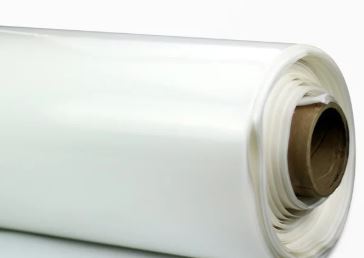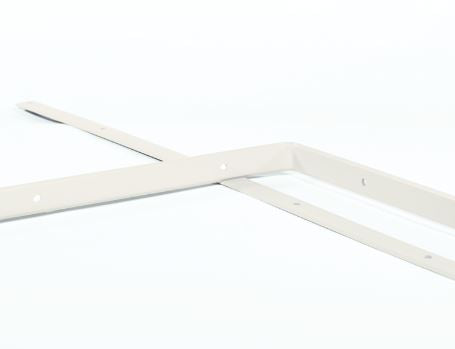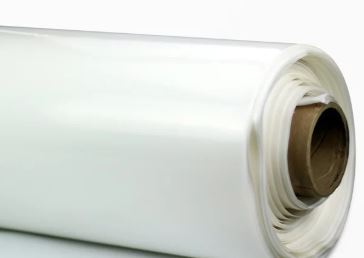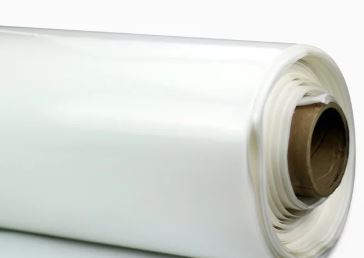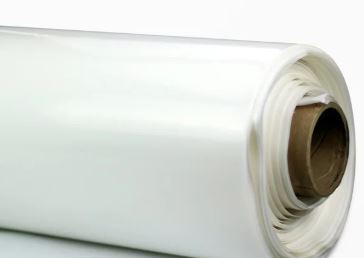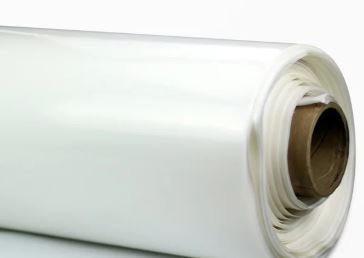Call (800) 731-8420
Stego Crawl Space Vapor Barrier
StegoCrawl is a vapor barrier extrusion wrap that is used for crawl space encapsulation. It is made of prime virgin resins and additives to make it have very low permeance, tear and puncture resistance and longevity. Benefits include energy savings, reduced mold, and better indoor air quality.
How much is StegoCrawl?
Pricing varies by size and thickness. It ranges from $.12 to about $.37 per square foot, (not including delivery). The 15 mil thickness is the most expensive option and costs $.30 to $.36 per square foot. The 6 mil option is the least expensive coming in around $.12 per square foot.
What mil sizes does it come in?
Stego offers three different mil thickness options for vapor barrier and retarders: 6-Mil, 10-Mil, and 15-Mil. The higher the mil thickness, the more robust protection the product offers, but the pricing also goes up as well. The thinner the mil, the less expensive the product is.
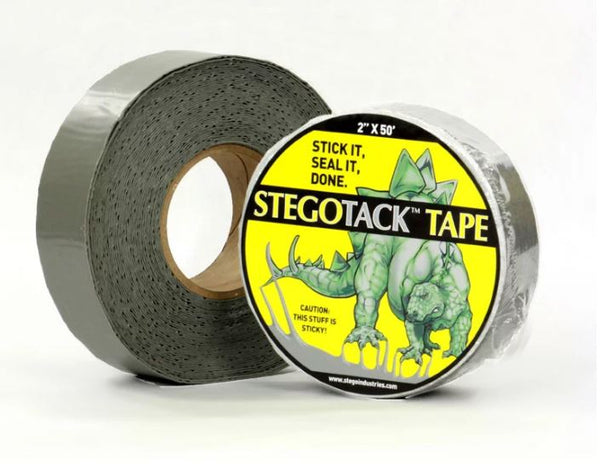
StegoTack Tape 2" Roll
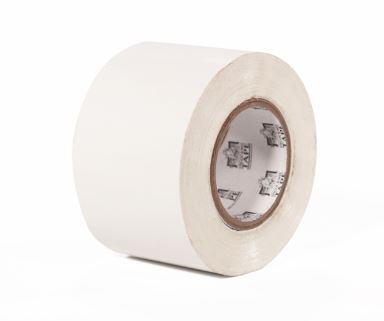
StegoCrawl Tape Roll
SHIPPING
✔ All items ship for free (standard ground)
☏ Call: (800) 731-8420 for pricing and shipping questions.
Orders typically ship within 1-2 business days if the order is placed before 2PM Eastern Time. Transit times are approximately 2-3 business days in the lower 48 States. The day that the order is shipped is not counted as a transit day.
Professionals Purchase Stego for Its:
- Long Life And Exceptional Strength
- Unsurpassed Permeance Characteristics
- Superior Tear and Puncture Resistance
- Reliable and Easy Installation
- Class A fire Rating
Full line of products:
Stego offers a full line of engineered products including their Wrap, Vapor Barrier, Tape, & Term Bar. When you choose Stego products, you will experience an effective installation, save time, energy, and resources while maintaining the stability of the crawl space vapor barrier.
StegoCrawl Tape
This tape offers long-lasting tack and adhesion. Its low-permeance tape will not only protect and seal seams where adaptable materials are required. This tape is commonly used for the interior of walls and roofs.
This is a double-sided tape used for bonding and sealing the Wrap to concrete, metal, masonry, and many other surfaces.
As discussed by Bryce Skeeters, author of Protect Your New Home With Crawl Space Encapsulation, New homes are built with floor-to-floor insulation along with crawl spaces. Even though insulation will help to control the temperature while conserving energy, it does not offer enough moisture protection.
Crawl encapsulation space using a vapor barrier is the best way to ensure you have a safer, drier, and an energy-saving environment. Unfortunately, many homeowners and builders seem to overlook this very important step for a healthier home. By encapsulating and re-insulating the crawl space separately before construction, eventually, the homeowner will start noticing problems. If you are considering building a new home, you should find a contractor who is able to seal and condition the crawl space as part of the construction process. It will be cheaper than taking it on as a separate entity.
By encapsulating the crawl space with a high-quality vapor barrier during the construction of the home will give the contractor the ability to seal the crawl space to prevent moisture from entering the interior of the home as well as being able to regulate the temperature of the home. This approach will save time, money, and keep you safe from other issues down the road.

Stego Term Bar
This flexible plastic bar is perfect for mechanically securing the StegoCrawl Wrap Vapor Barrier to concrete, wood, or masonry.
How To Insulate Your Home and Crawl Spaces While Preparing For Encapsulation
It’s a given that every home must have insulation to protect it from the increase and decrease of heat. If installed properly, your home will run more efficiently. In turn, if you are encapsulating your crawl space during the construction phase, there might be some changes made to guarantee maximum effectiveness. If your crawl space is vented you should apply the insulation to the floor joists. If it is not vented, the insulation must be installed at the perimeter walls as advised by Source 2015 IRC, Section R408.3.
The standard open-cell insulation used in floor joists is not able to resist moisture and will attract unwanted moisture and mold. When choosing the type and where you want to install this product just keep in mind it has its own limitations when it comes to fire ratings and make sure you follow the local code requirements.
Installing insulation the right way along with your vapor barrier wall will maximize the efficiency of the entire system. This will extend the perimeter of the building envelope into a fully enclosed and conditional crawl space. Doing so during construction will save money and energy for your home now as well as in the future. In turn, this will reduce the need for a retrofit later on.
Talk To Your Architect About Your Crawl Spaces
You might already have a good idea what you want for your home but you should still sit down with your architect to turn your ideas into reality. Here are some subjects you should discuss:
• The type of insulation and where it should be installed.
• The quality of the below-slab vapor barrier and the process for installation.
• The mechanics involved in controlling humidity in the crawl space.
Read up online and visit our blog to help you choose the best crawl space liner for your home. It’s also very important to consider your crawl space as a part of your interior. Addressing encapsulation during the construction phase vs waiting for problems to surface down the road, you can prevent potential moisture and damage caused by pests which will save you time and money.
15-Mil Vapor Barrier

The Unbeatable flow of matter traits:
Including the same technology you have come to expect from Stego Stego Wrap below-slab vapor barrier, 15-Mil Vapor Barrier is created with a white liner for an excellent custom blend for unparalleled achievements in crawl space conditions. This multi-layer plastic extrusion vapor barrier offers the very best moisture protection and long-lasting effects even in the most unrelenting conditions.
Soil gasses and moisture invasion are the leading concerns when it comes to a building’s health and energy efficiency. The 15-Mil Vapor Barrier offers excellent low permeance below 0.010 perms. It’s extremely long-lasting low boasting of 203.8 newtons of push-through resistance.
Using the input from crawl space contractors regarding dimensions and roll sizes, this product is perfect for encapsulating crawl spaces. This very durable product is composed of prime, virgin resins, and minus any recycled materials in order to avoid any degradation.
.By using these products you will experience efficient installation, saving you time and resources while maintaining the integrity of the vapor barrier system.
The Standards of the American Society for Testing and Materials (ASTM):
ASTM E1745 - The Standards for Water Vapor retarders are used for contact with Soil or Granular Fill under concrete slabs.
ASTM F1249 - This test is used for water vapor transition rates through plastic film and sheeting by using a modulated infrared sensor.
ASTM D4833 - The test method for index puncture resistance of Geotextiles, Geomembranes (which are synthetic membrane liners), and Other related products.
ASTM D1709 - The test for the impact resistance of plastic film by a free-falling dart method.
ASTM D882 - A test for the given properties of plastic sheeting.
ASTM E154 - Under Section 8, F1229 permeance after wetting, drying, and soaking.
ASTM D1434 - A standard test to know the gas impassibility of plastic film sheeting.
Physical Characteristics
The Under-Slab Vapor Retarder exceeds ASTM E1745 minimum requirements. Water Vapor Permeance is less than 0.010 perms. The Permeance after the condition is wet, dry and soaking less than 0.010 perms.
The Benefits of Using Crawl Encapsulation with StegoCrawl Wrap 15-Mil Vapor Barriers
- Energy savings by offering less moisture for your home’s HVAC to deal with.
- Reduces the amount of mold. Moisture is a leading ingredient that leads to mold. With less moisture, the level of mold will be greatly reduced.
- Decrease the level of mildew odors. Moisture building up in your crawl space will definitely lead to mildew odors.
- Reduce flooring problems. Without good crawl space moisture protection, it’s possible you will have flooring problems.
- Improvement of indoor air quality. You will have a good reduction in soil contaminants, mold, and mildew.
10-Mil Vapor Retarder

The same knowledge and experience you have come to trust from Stego Industries’ Below-Slab Vapor Retarders, The 10-Mil Vapor Retarder is a white liner with an excellent blend for the best outcome in crawl space conditions.
Gasses and moisture in soil are serious concerns for the health and efficiency of a building. This durable product is designed with virgin resins and does not include any recycled materials in order to stay far from degradation.
Along with its accessories that are designed for crawl space encapsulation, Stego Tape, Stego Term Bar, and StegoTack Tape should be your first choice.
These products will give you easy installation, will save you time and resources while protecting the integrity of the vapor barrier system.
10-Mil Technical Data Sheet:

10-Mil ASTM Standards:
ASTM E1745 - The Standards for Water Vapor retarders are used for contact with Soil or Granular Fill under concrete slabs.
ASTM F1249 - This test is used for water vapor transition rates through plastic film and sheeting by using a modulated infrared sensor.
ASTM D1709 - The test for the impact resistance of plastic film by a free-falling dart method.
ASTM D882 - A test for the given properties of plastic sheeting.
ASTM E154 - Under Section 8, F1229 permeance after wetting, drying, and soaking.
Physical Characteristics
The Under-Slab Vapor Retarder exceeds ASTM E1745 Class A requirements.
Water Vapor Permeance is less than 0.0259 perms after the 3 conditions; wet, dry, and soaking.
The Benefits of Crawl Space Encapsulation & 10-Mil Vapor Retarder:
- There will be less moisture to deal with and is energy efficient
- It will reduce the level of mold due to less HVAC moisture in your home.
- Due to less moisture, which is the leading cause for the growth of mold, you will see a dramatic drop in the possibility of mold growth.
- You will experience less mildew odor because there are lower chances of mildew build-up.
- You will have healthier flooring that will not come in contact with moisture
- Your indoor air quality will be so much better due to a reduction in soil contaminants, mildew, and mold.
Wrap 6-Mil Vapor Retarder

Wrap 6-Mil Vapor Retarder is superior to your standard generic 6-Mil poly which can deteriorate and be torn very easily. This product is strong enough for crawl space construction, is long-lasting, and the bright white material will have a very professional look to it.
This is the best product for those who want to step beyond the limitations of the codes but not drain their bank account.
As mentioned earlier, gasses and moisture should be major concerns for the health and efficiency of a building. Stego's Wrap 6-Mil Vapor Retarder is long-lasting because it’s made from virgin resins and does not include recycled materials so the building will be well-protected.
6-Mil Technical Data Sheet

Standards - ASTM
ASTM E1745 - The Standards for Water Vapor retarders are used for contact with Soil or Granular Fill under concrete slabs.
ASTM F1249 - This test is used for water vapor transition rates through plastic film and sheeting by using a modulated infrared sensor.
ASTM D1709 - The test for the impact resistance of plastic film by a free-falling dart method.
ASTM D882 - A test for the given properties of plastic sheeting.
ASTM E154 - Under Section 8, F1229 permeance after wetting, drying, and soaking.
Physical Characteristics
Under-slab vapor retarder exceeds ASTM E175 requirements.
Water Vapor Permeance is less than 0.0381 perms after the 3 condition - wet, dry, and soaking

